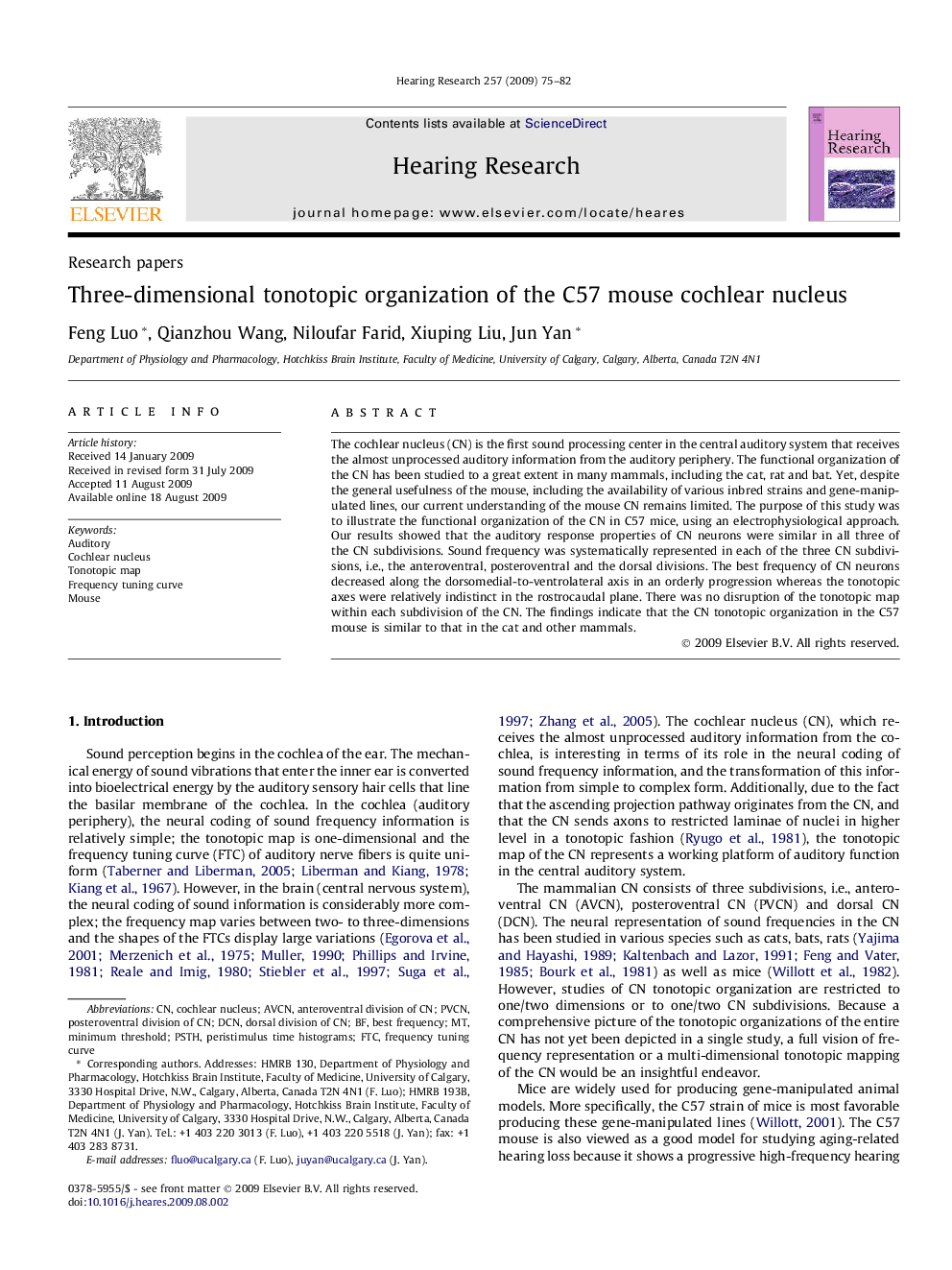| Article ID | Journal | Published Year | Pages | File Type |
|---|---|---|---|---|
| 4355825 | Hearing Research | 2009 | 8 Pages |
The cochlear nucleus (CN) is the first sound processing center in the central auditory system that receives the almost unprocessed auditory information from the auditory periphery. The functional organization of the CN has been studied to a great extent in many mammals, including the cat, rat and bat. Yet, despite the general usefulness of the mouse, including the availability of various inbred strains and gene-manipulated lines, our current understanding of the mouse CN remains limited. The purpose of this study was to illustrate the functional organization of the CN in C57 mice, using an electrophysiological approach. Our results showed that the auditory response properties of CN neurons were similar in all three of the CN subdivisions. Sound frequency was systematically represented in each of the three CN subdivisions, i.e., the anteroventral, posteroventral and the dorsal divisions. The best frequency of CN neurons decreased along the dorsomedial-to-ventrolateral axis in an orderly progression whereas the tonotopic axes were relatively indistinct in the rostrocaudal plane. There was no disruption of the tonotopic map within each subdivision of the CN. The findings indicate that the CN tonotopic organization in the C57 mouse is similar to that in the cat and other mammals.
